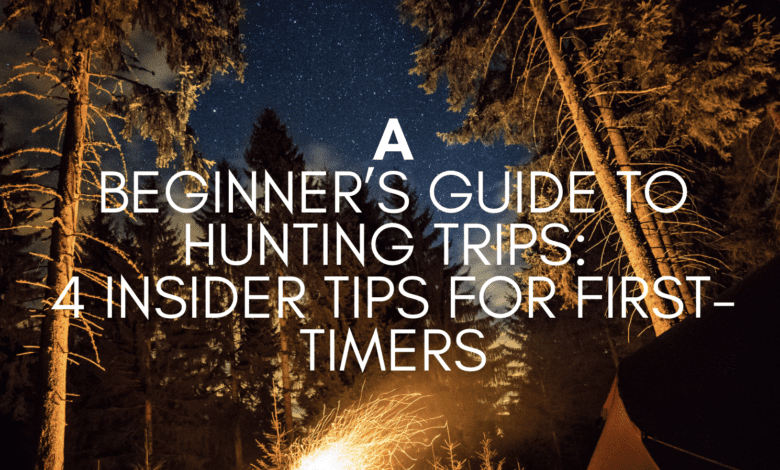A Beginner’s Guide to Hunting Trips: 4 Insider Tips for First-Timers

For those looking to embark on their first hunting trip, planning the finer details is no small feat. Aside from packing the right tools and finding the perfect weapon, achieving the hunting trip of a lifetime boils down to a three-pronged checklist: insider knowledge, endurance, and a fighting spirit. Expect long days of lugging around a heavy pack in harsh conditions. Because you’ll carry all your must-have equipment on your back, including any kills you’ve managed to make, packing light and preparing a meatpacking bag is essential.
Along with overpacking, first-timers can easily fall prey to rookie mistakes, like choosing a stand setup hung too low on a tree or allowing even the youngest bucks to spot you out of an open skyline easily. Failing to test your equipment in hunting gear beforehand can be the reason you come home empty-handed, especially if using a broadhead. Take note that your chances of missing your target will be disproportionately high if you don’t put in the work at a range.
Ultimately, confidence is everything when you’re eye-to-eye with a five-pointer. For those picking up the hobby later in life, you’ll need to stay up-to-date with hunter education. That way, you can stand tall when faced with a tough shot. Because hunting is a highly regulated sport, and each state enforces different requirements, education courses will also teach you about safe firearm handling and ethical shot placement.
Becoming a successful hunter takes work and dedication to the sport. With these four insider tips, you can get that much closer to becoming a pro.
Become one with your weapon of choice
Choosing the right weapon is different for every hunter. Some may go for a lighter rifle to make carrying easier. Others opt for a larger firearm, such as the Mossberg Maverick 500 shotgun—one of the most reliable shotguns on the market.
Whatever you decide, the easiest way to familiarize yourself with a new weapon is to clean it. The process of taking apart and putting together the gun will force you to study the ins and outs of your firearm, up close and personal.
Wear the right clothing
Hunting gear keeps you camouflaged from game while keeping you warm and dry during the seemingly endless hours you’ll spend in a hanging stand. The wrong clothing, however, can make you stand out to onlooking prey. For optimal results, research your terrain and choose the gear guaranteed to keep you concealed at all times.
Become a tracker
Novice hunters sit and wait, but experts follow their prey using sharp techniques. As you stalk, match your pace to the deer’s and blend into your surroundings by making small noises. Look for hoof marks as you go. Note that the width of the print can be an indication of buck size. Follow blood trails by marking spots with flags or tissues, and make sure to remove them later.
Pinpoint the best time and place to hunt
You won’t find a big buck just any time of year, and the wrong area can become picked over early in the season. The best hunting time is during mating season, which can vary in each country’s region. Generally speaking, deer are most active during early morning hours and near dusk. Despite this consistency, you should always prepare for the season by scouting out the area.
Parting shot
Using these four tips, you can become an expert hunter and even score yourself a prize-winning buck or two. Don’t shy away from the challenge. Step up to the plate by dodging these rookie mistakes.
